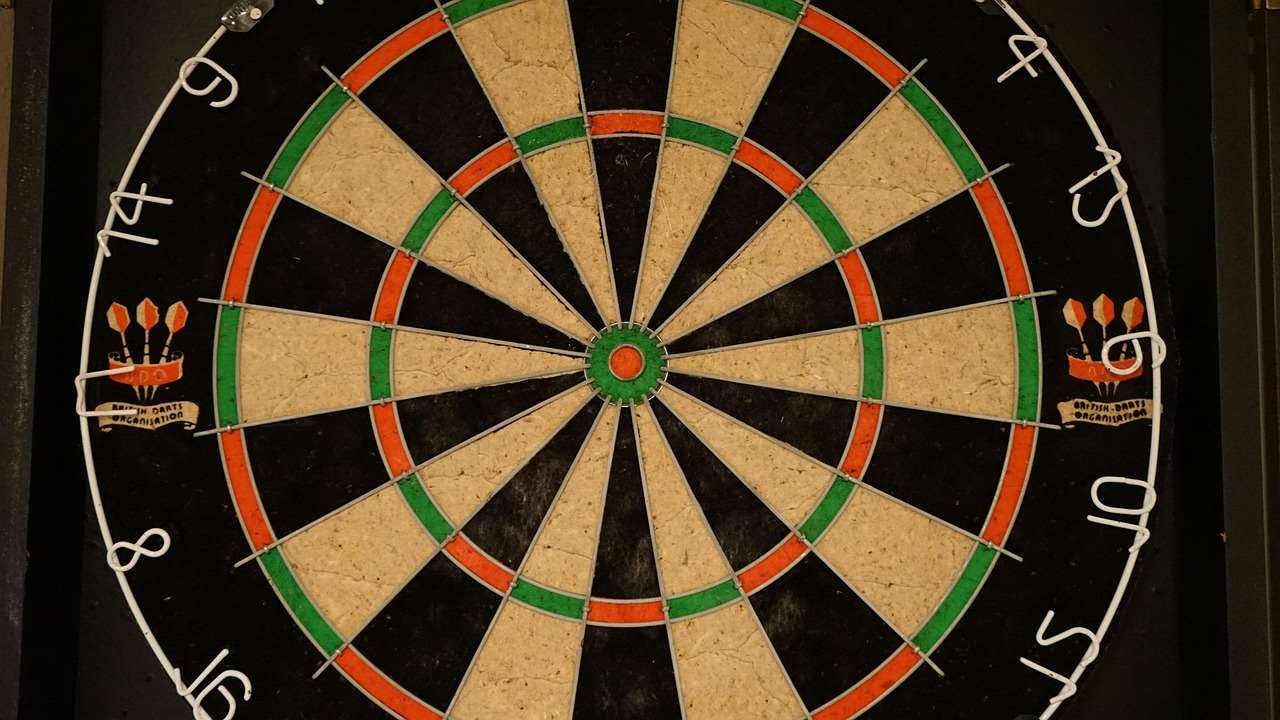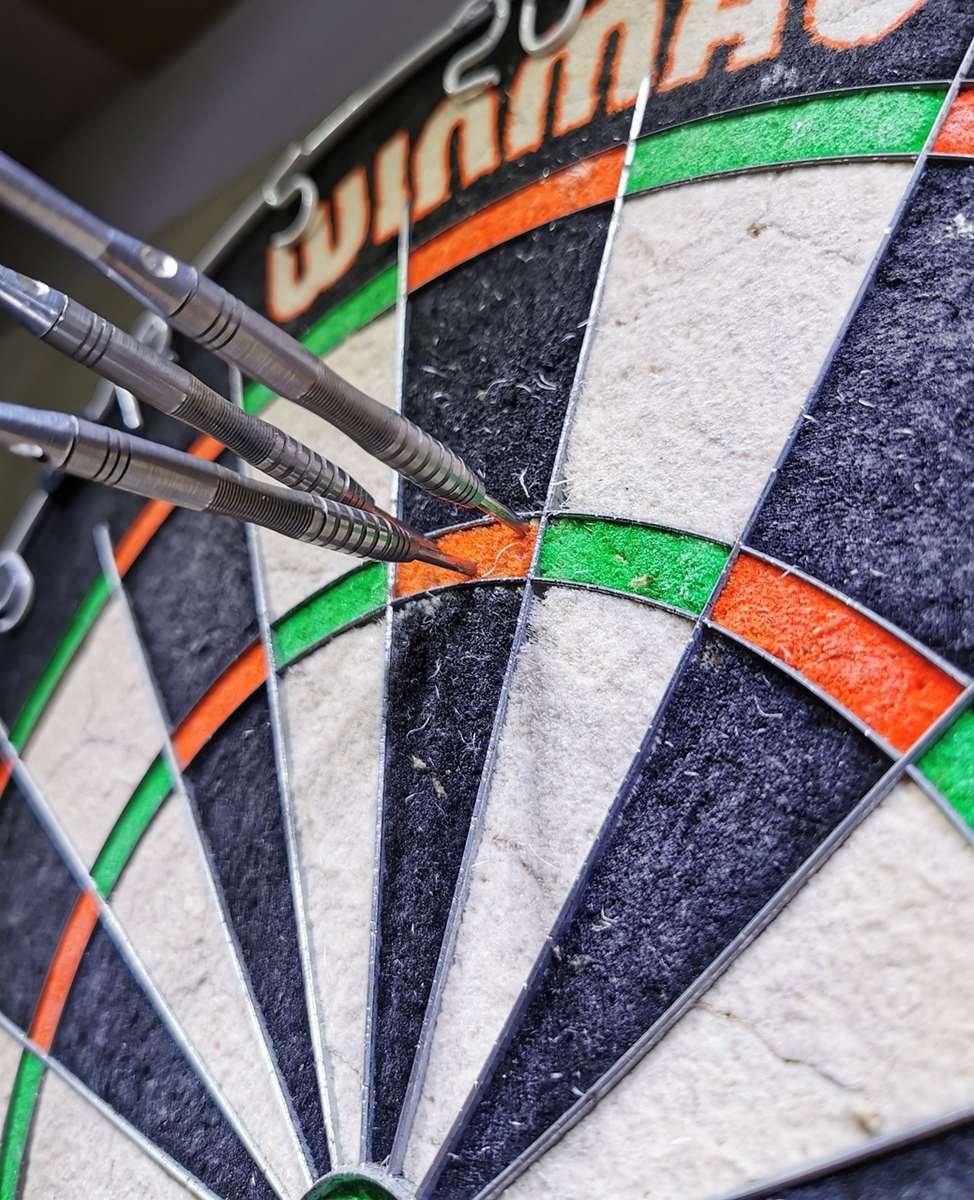To build a winning fantasy darts team, focus on **three-dart averages, checkout percentage, and 180s per leg**. This article explores these and other crucial stats that will give you a competitive edge in your fantasy darts league.
⚠️ Still Using Pen & Paper (Of een schoolbord)?! ⚠️
Stap in de toekomst! De Dart Teller -app behandelt alle scoren, stelt kassa voor, en volgt uw statistieken automatisch. It's easier than you think!
Probeer de Smart Dart Teller -app gratis!Klaar voor een upgrade? Klik hierboven!
Understanding The **Best Stats For Fantasy Darts** Success
Selecting the right players for your fantasy darts team can be a tricky task. While gut feeling and favorite players play a role, relying on data-driven insights is key to long-term success. Understanding which statistics truly correlate with winning performances will significantly increase your chances of dominating your league. Let’s delve into the crucial metrics you need to analyze.

The Power of Three-Dart Averages
The **three-dart average** is arguably the single most important statistic in darts. It represents the average score a player achieves with three darts at the board. A higher average generally indicates greater consistency and scoring power. Players consistently hitting high averages are more likely to set up finishes and ultimately win legs and matches. When selecting players, prioritize those with consistently high three-dart averages over the past several months.
Look beyond the overall average and consider these factors:
- Trend Analysis: Is the average improving, declining, or stable? An upward trend is a positive sign.
- Surface Type Correlation: Understand how the averages change when a player is on TV versus when the player is not.
- Opponent Strength: Compare averages against different levels of competition.
Checkout Percentage: The Art of Finishing
While scoring is essential, converting those scores into legs won is paramount. This is where **checkout percentage** comes into play. This stat reflects the percentage of times a player successfully checks out (finishes a leg) when they have a double available. A high checkout percentage demonstrates composure under pressure and the ability to capitalize on scoring opportunities. A player with a high three-dart average but a poor checkout percentage may struggle to convert their scoring into wins. To understand the impact of these stats, have a look at Impact goksponsor sponsor darts and how it affects the players.
When analyzing checkout percentage, consider these points:
- Double Preference: Does the player have a preferred double they are particularly accurate on?
- Pressure Situations: How does their checkout percentage hold up in crucial legs or close matches?
- Checkout Complexity: Can the player nail the big checkouts, like a 170?
Maximizing 180s: The High-Scoring Factor
Hitting 180s (three darts scoring 60 each, totaling 180) is a crucial aspect of darts, not only for scoring power but also for momentum. While not as decisive as three-dart average or checkout percentage, the number of **180s per leg** can be a valuable indicator of a player’s high-scoring potential. Players who consistently hit 180s put pressure on their opponents and create more opportunities to set up finishes. In many fantasy darts leagues, 180s are a key scoring category.
Keep these factors in mind when assessing 180s:
- Leg Length: How many legs does the player typically play in a match? More legs mean more opportunities for 180s.
- Rhythm and Consistency: Does the player have a consistent rhythm that allows them to rack up 180s?
- Pressure Impact: Does their 180 hitting rate decline under pressure?

First Nine Dart Average: Early Game Dominance
The **first nine-dart average** gives an indication of how well a player starts a leg. A high first nine-dart average shows they are immediately putting pressure on their opponent by building a substantial lead. This can translate into easier checkouts later in the leg. While not as commonly tracked as three-dart average, it’s a valuable supplementary stat to consider.
Here’s what to consider for First Nine Dart Average:
- Consistency: Does the player consistently start strong, or is it variable?
- Opponent Impact: Does the strength of the opponent affect the player’s starting average?
- Match Momentum: Does a strong start translate into a positive overall match performance?
Legs Won Against the Throw (LWAT): Breaking Throw Impact
**Legs Won Against the Throw (LWAT)**, also known as break percentage, measures how often a player wins a leg when their opponent has the throw (i.e., starts the leg). This statistic is a strong indicator of a player’s ability to perform under pressure and disrupt their opponent’s rhythm. A high LWAT percentage suggests the player is mentally strong and capable of winning crucial legs. To learn more about darts you can use Darts gok en fantasiecompetities gids to enhance your knowledge.

Analyzing LWAT requires considering:
- Opponent’s Throw: How strong is the opponent’s starting throw?
- Pressure Moments: Does the LWAT percentage increase or decrease in important legs?
- Match Strategy: Does the player employ specific strategies to break their opponent’s throw?
Other Useful Stats for Fantasy Darts
Beyond the core stats, several other metrics can provide valuable insights when selecting your fantasy darts team:
- 100+ Scores per Leg: Shows consistency in scoring big numbers.
- Average Checkout Value: Reflects the player’s ability to hit high-value checkouts.
- Win Percentage: An overall indicator of a player’s success rate.

Remember to analyze these stats in conjunction with the primary metrics for a more comprehensive assessment. Also, ensure to have a grasp of how Weddenschap sponsoring impact op darts affects your analysis.
Where to Find Darts Statistics
Several websites and resources provide comprehensive darts statistics. Some popular options include:
- DartConnect: Offers detailed stats from various tournaments.
- DartsDatabase: A comprehensive database with player profiles and match results.
- PDC Official Website: Provides stats and information on PDC tournaments.
Be sure to utilize these resources to gather the necessary data for informed fantasy darts decisions. Also check out Betting Company Logos Player Shirts so that you are aware of everything that is relevant to darts.
Putting It All Together: Building Your Winning Team Using The **Best Stats For Fantasy Darts**
Armed with an understanding of these key statistics, you can now approach your fantasy darts draft or team selection with greater confidence. Remember to prioritize players with high three-dart averages, strong checkout percentages, and a consistent ability to hit 180s. Don’t neglect supplementary stats like first nine-dart average and legs won against the throw, and always consider the context of the data, such as opponent strength and pressure situations.

Here is a summary of the **best stats for fantasy darts**:
- **Three-Dart Average:** Overall scoring power and consistency.
- **Checkout Percentage:** Ability to convert scores into legs won.
- **180s per Leg:** High-scoring potential and momentum.
- **First Nine-Dart Average:** Early game dominance.
- **Legs Won Against the Throw (LWAT):** Performance under pressure.
Conclusie: Mastering the Stats, Mastering Fantasy Darts
By focusing on these **best stats for fantasy darts**, you’ll be well-equipped to build a successful team. Remember that no single statistic tells the whole story; a holistic approach is key. Continuously monitor player performance, adapt your strategy, and stay informed about the latest developments in the world of darts. Nu, go out there and dominate your fantasy darts league! Consider starting your research by checking out Hoe gokbedrijven sponsoren sponsoren.
Hoi, Ik ben Dieter, En ik heb Dartcounter gemaakt (Dartcounterapp.com). Mijn motivatie was geen darts -expert - helemaal tegenovergestelde! Toen ik voor het eerst begon te spelen, Ik hield van het spel, maar vond het moeilijk en afleidend om nauwkeurige scores te houden en statistieken te volgen.
Ik dacht dat ik niet de enige kon zijn die hiermee worstelde. Dus, Ik besloot om een oplossing te bouwen: een eenvoudig te gebruiken applicatie die iedereen, Ongeacht hun ervaringsniveau, zou kunnen gebruiken om moeiteloos te scoren.
Mijn doel voor Dartcounter was eenvoudig: Laat de app de nummers afhandelen - het scoren, de gemiddelden, de statistieken, Zelfs checkout suggesties - zodat spelers puur kunnen richten op hun worp en genieten van het spel. Het begon als een manier om het probleem van mijn eigen beginners op te lossen, En ik ben heel blij dat het is uitgegroeid tot een nuttig hulpmiddel voor de bredere darts -community.